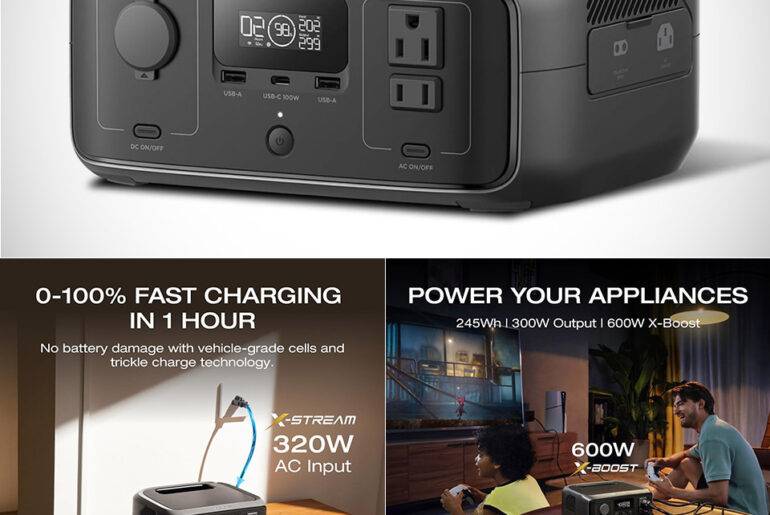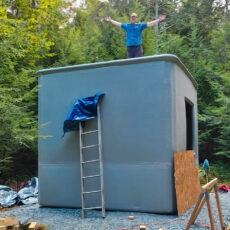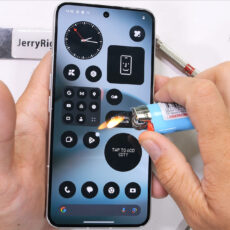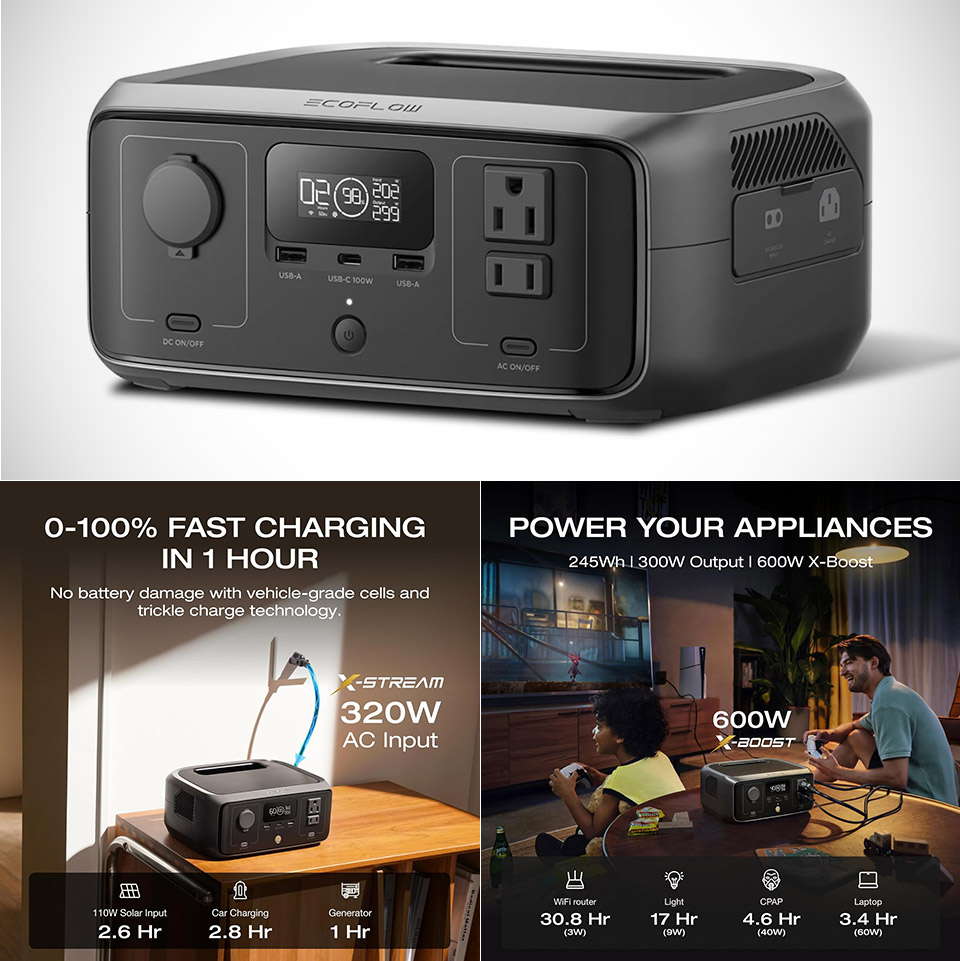
The EF ECOFLOW RIVER 3 could be your go-to portable power station for home and outdoor adventures on a budget, with reliable power in a small package. Weighing under 8 pounds and about the size of a small toaster, the RIVER 3 is a breeze to carry, whether you’re packing for a weekend hike or storing for emergencies.
Its 245Wh lithium iron phosphate (LiFePO4) battery powers phones, laptops or even a mini fridge. With a 300W standard output and 600W surge capacity via ECOFLOW’s X-Boost technology, it can handle 90% of household devices. In tests, it ran a 25W fan for almost 10 hours and charged a smartphone over 20 times with ease.
- [Industry-leading GaN Technology] With groundbreaking X-GaNPower, RIVER 3 revolutionizes energy efficiency, delivering double runtime for appliances...
- [1 Hour Fast Charging] Fast AC charging from 0-100% in 1 hour with X-Stream technology. No adapter required, only one cable is needed for charging. Or...
- [Long-lasting and Safe] With an upgraded LFP battery, charge and recharge 3000+ times for 10 years of power. Built in X-Guard tech, an advanced...
The RIVER 3’s design is tough and practical, with a solid handle that feels like a lunchbox for rough conditions. Its IP54 rating means it’s splash and dust resistant and the fire-retardant shell withstood a 3.3-foot drop test without a hitch. Built to last, it has 3,000 charge cycles – about 10 years of daily use before it drops to 80% capacity. A 5-year warranty gives you confidence for long term use.
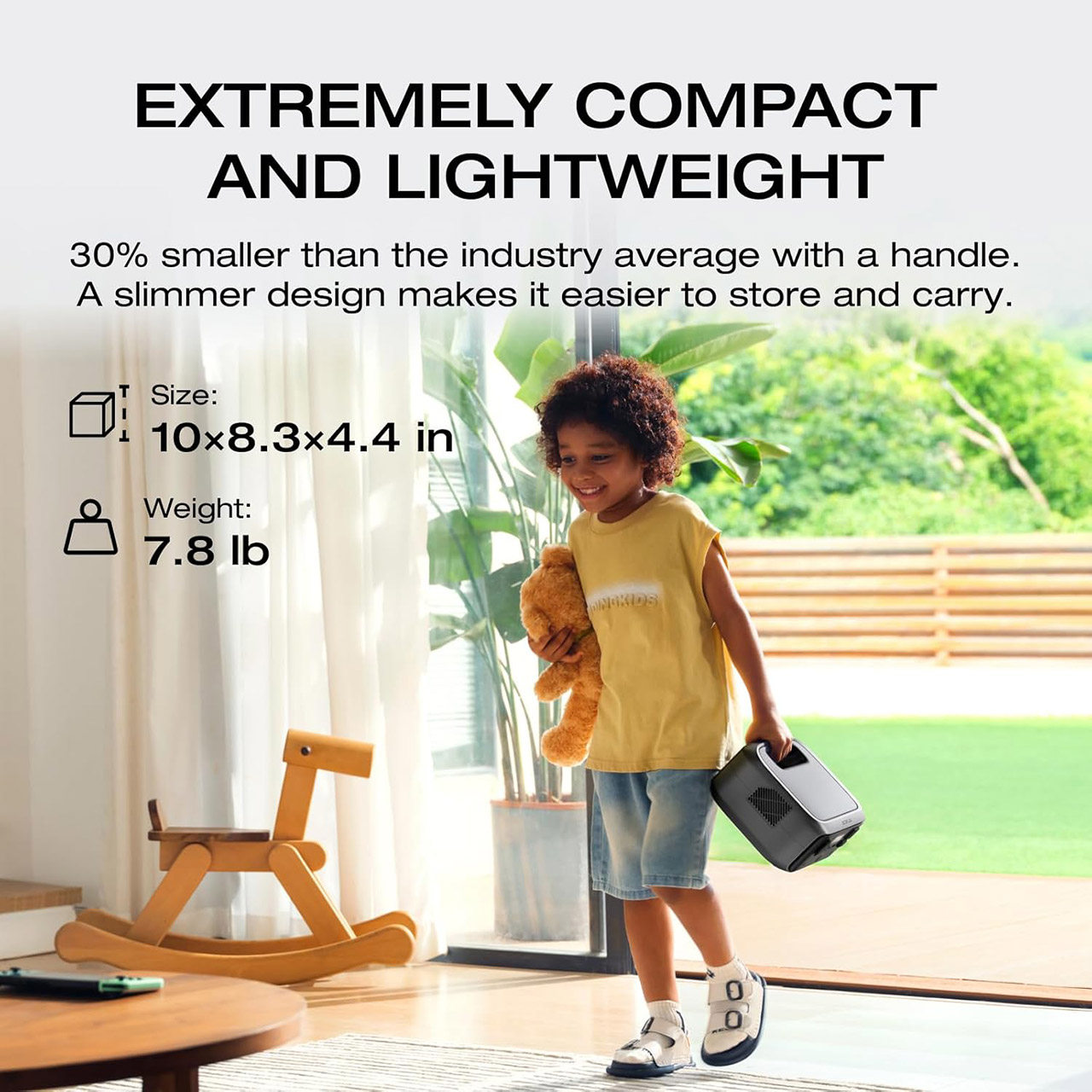
Charging speed is what sets the RIVER 3 apart. It goes from 0 to 100% in about an hour from a wall outlet, faster than most. For off-grid use, it can take up to 110W of solar input and fully charge in about 2.5 hours in ideal sunlight. A car charger cable included takes about 3 hours to fully charge. In a camping test, a 45W solar panel kept it powered, running a phone and Bluetooth speaker for two days of partly cloudy weather. With AC, solar, car or gas generator charging options, it’s ready for any situation, from home to the wilderness.
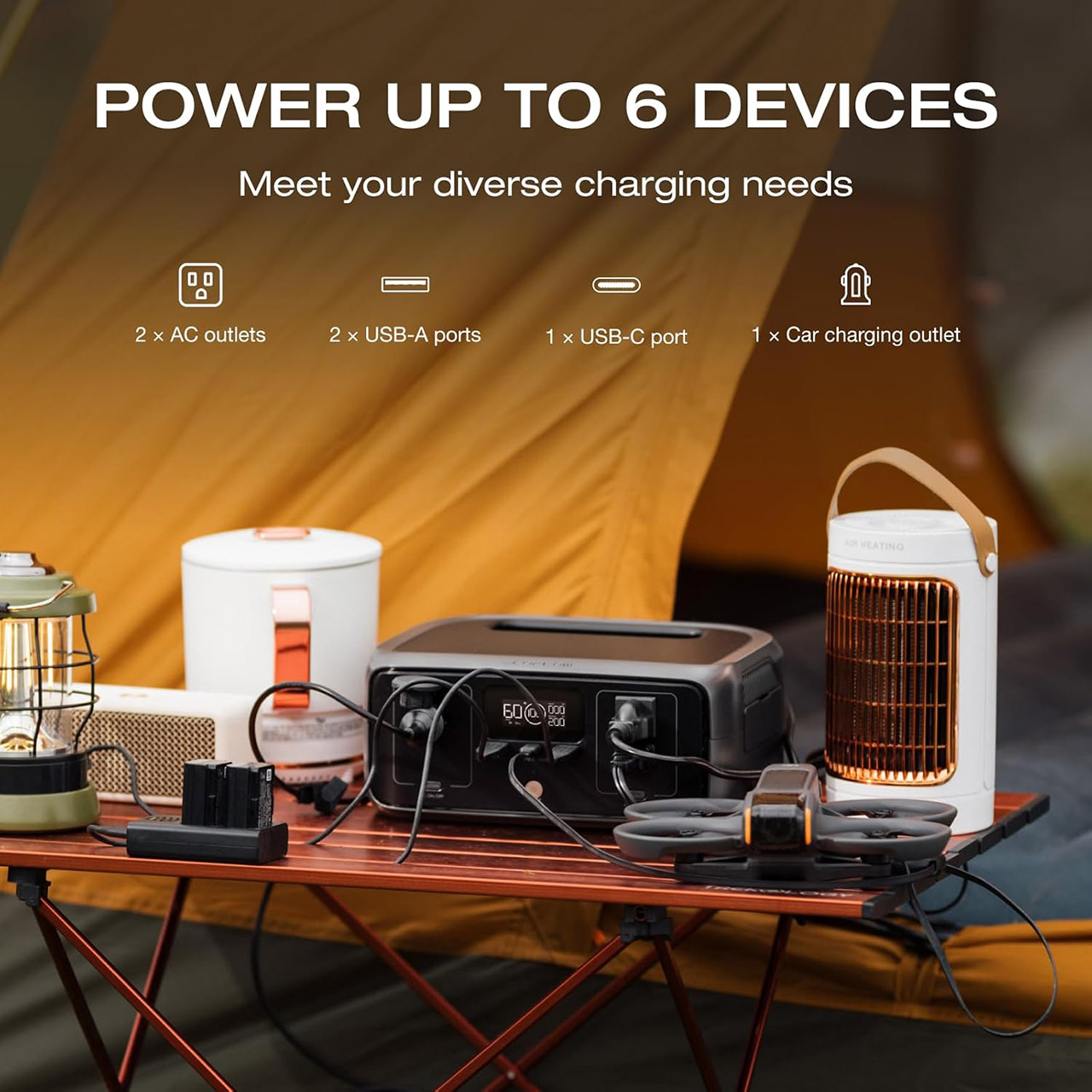
The ECOFLOW app makes it easy to control with an intuitive interface. Connect via Bluetooth or Wi-Fi and you can monitor battery levels, adjust charging speeds and set custom power limits. In a home UPS test, the app enabled “always-on” mode for the AC outlet, so a tankless water heater ran during a mock outage. Real-time data like charge status and runtime estimates makes power planning a breeze, especially off-grid.
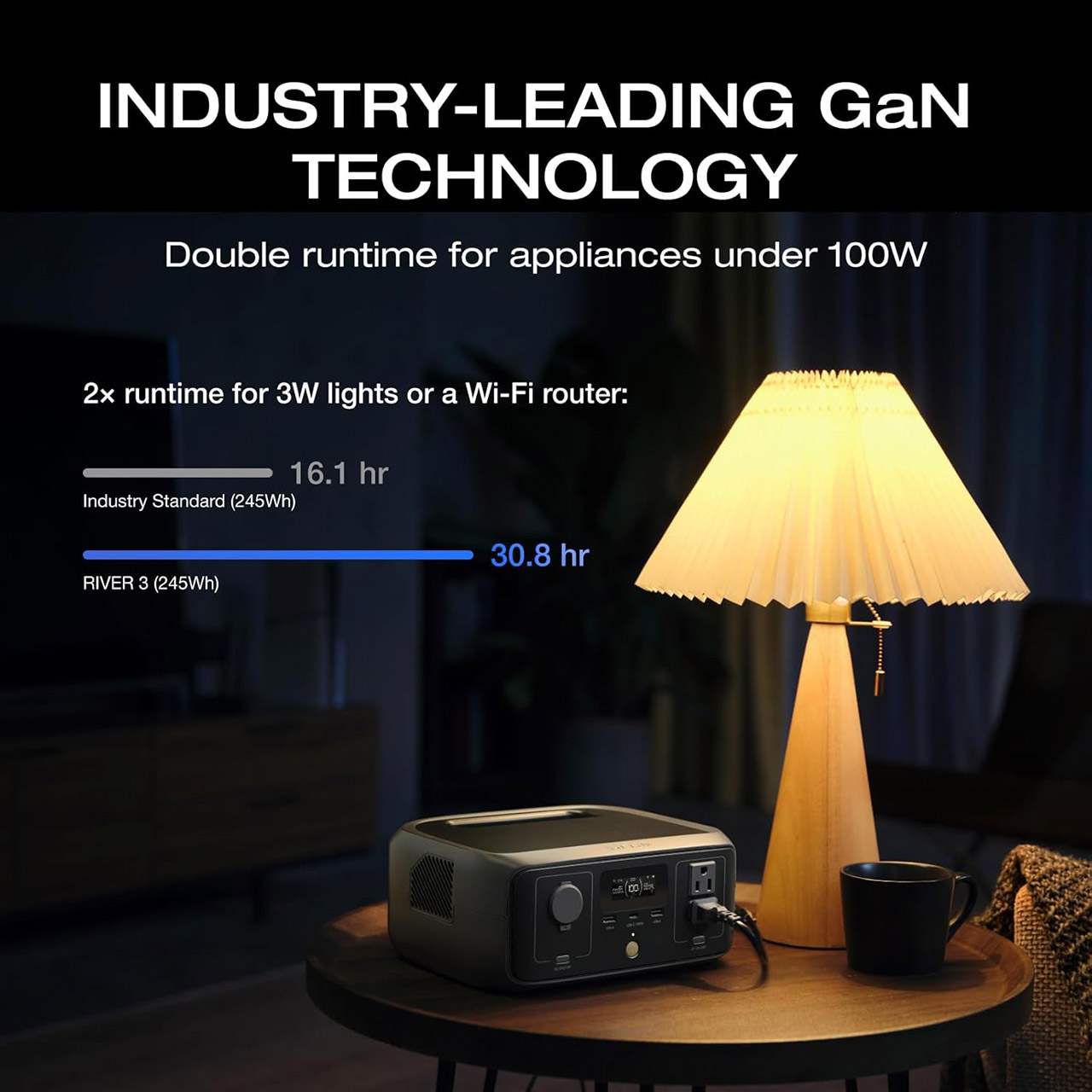
As a home backup, the RIVER 3 is an uninterruptible power supply (UPS) with a 20ms switchover, fast enough to keep routers, modems or desktops running during outages. In testing it powered a Wi-Fi router and security camera for over 30 hours. It’s whisper quiet – under 30dB – so it won’t disturb homes or campsites, unlike noisy gas generators. For sensitive equipment like high-end servers the RIVER 3 Plus with a 10ms switchover might be a better fit.
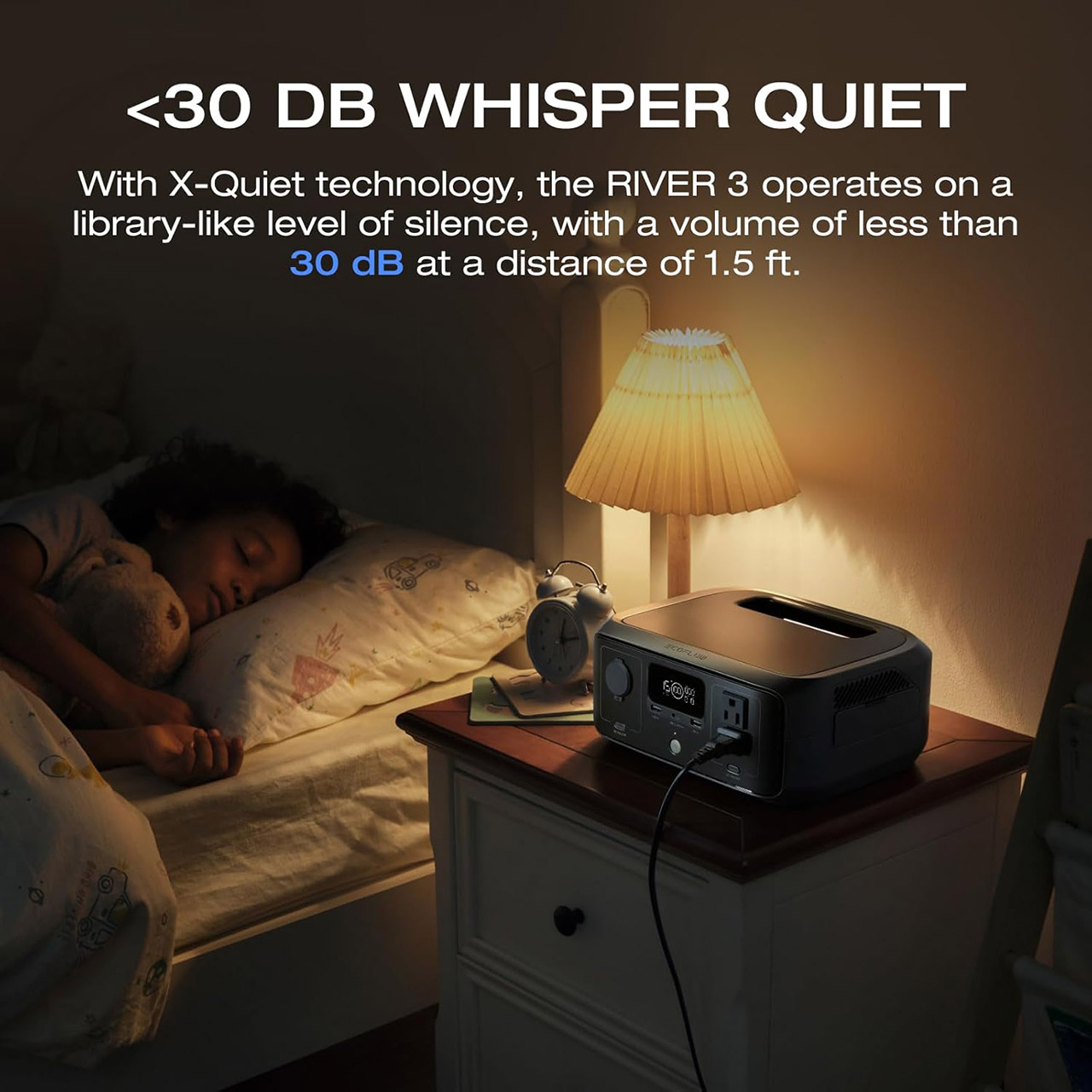
Gallium nitride (GaN) technology means low wattage devices, like a 3W LED light or Wi-Fi router can run twice as long than on older stations. That said, RIVER 3 has 5 outlets: 1 three prong AC, 1 two prong AC, 2 USB-A, 1 USB-C, 1 DC car charger output. It covers most of your device needs. The front facing ports are user friendly and the clear LCD display shows battery percentage, input/output watts and runtime at a glance.

At $239, the RIVER 3 is cheaper than the Jackery Explorer 240 v2 ($249) as well as the Anker SOLIX C300 ($289) and has faster charging and better app. Its LiFePO4 battery’s durability and ECOFLOW’s quality reputation add value. One caveat: it’s not for powering entire RVs or high wattage appliances for hours but more so small electronics, outdoor adventures or as a short term home backup.
TechEBlog primarily earns revenue through advertising and affiliate links. For instance, if you click a “Gadget Deals of the Day” button and make a purchase on Amazon, we earn a small commission.

